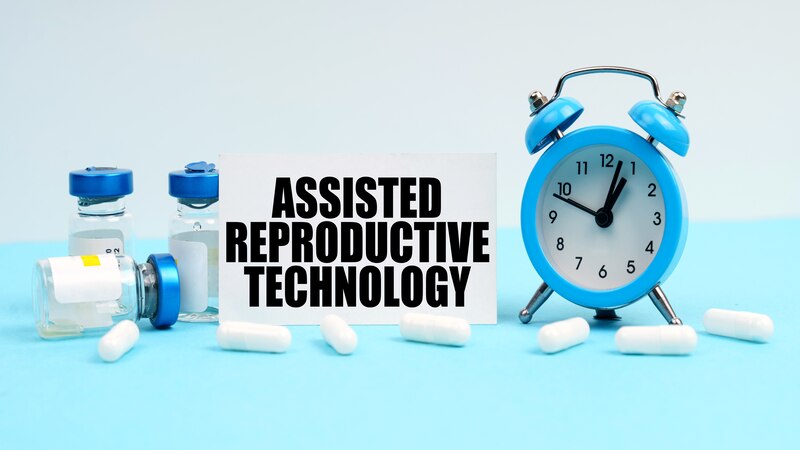
Assisted Reproductive Technologies or ARTs have been available all around the world since the 1970s. But in recent times, where both males and females are deciding on late marriages by prioritizing their respective careers or deciding to have late parenthood, the need for assisted reproductive techniques is on the rise. There are different types of assisted reproductive technologies.
Initially, when ART was introduced only in vitro fertilization used to be performed, due to increased demand and advancements in technology, different types of ART with high-end techniques are being constantly designed and implemented which in turn are helping couples have a baby. In this article, we will be discussing different types of ART in detail.
What is ART?
Assisted reproductive technology refers to all the techniques which involve direct manipulation of human oocytes outside the body for the purpose of achieving pregnancy(1).
In 1978, the first baby was born by IVF named Louis Brown (2). Since then, ART has helped many couples to achieve pregnancy. There are different types of ART techniques which are discussed in detail below.
How is ART Helping Couples With Infertility?

ART is the procedure where ovum and sperm are made to form embryos inside the laboratory and implantation is left in the hands of nature (3).
The success rate of Assisted Reproductive Technologies is 40 to 70 % more than that of natural conceiving. In recent times, where there is an increase in genetic abnormalities and late marriages, couples are benefitting from ART techniques. The couples are able to conceive before the biological clock ticks off.
ART can help couples facing the following conditions (4)
-
- Tubal factor infertility
- Male factor infertility
- Uterine factor infertility
- Cancer patients
- Unexplained infertility
- Ovarian failure/ premature ovarian failure
- PCOS
- Multiple cycles of IUI failure
- Age factor couples in their 40s and late 30s
- Couples who need PGD testing
[Read : Getting Pregnant After 35]
What Are The Different Types of ARTs?

There are different types of ARTs. The key ones among them are listed below.
1. In Vitro Fertilization (IVF)
IVF was first introduced in the 1970s and was a preferred method until ICSI was introduced. InVitro Fertilisation or IVF is a complicated procedure involving multiple steps.
The procedure includes the following steps (5)
- The woman is given a hormone treatment protocol and the eggs are made to grow. Then the eggs are taken out of the body.
- After the ovum picks up is done, the oocytes are screened and the good oocytes are kept along with sperms.
- 50,000 to 100,000 sperms per oocyte are incubated for natural selection and embryos are made which are then cultured In the incubator inside the test tube.
- When the embryos have grown either till day 3 or day 5 (blastocyst) stage, they are transferred to the woman’s uterus. The success rate of IVF is 40 to 60%.
Though the popularity of IVF declined after the introduction of ICSI, in recent years it’s again gaining back its popularity since some people believe that natural selection by sperm should be advocated.
The adverse effect of natural selection is that after 24 hours there is a possibility that the embryo may not be formed since sperm might not fertilize the oocyte (6).
[Read : Basics Of IUI and IVF]
2. Intracytoplasmic Sperm Injection (ICSI)
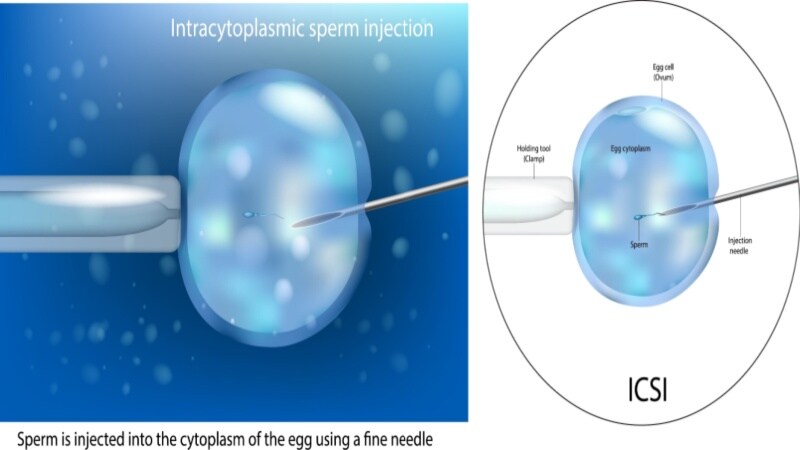
ICSI or Intra Cytoplasmic Sperm Injection is an ART method introduced to help those couples who have male factor infertility(7) (8). But then it was seen that the success rate of ICSI is more than that of conventional IVF.
The success rate is around 50 to 70% all around the world.
- The procedure is quite similar to that of IVF but here the sperms are not incubated with oocytes for natural selection. In this process, each sperm is picked up via ICSI microscope and pushed inside the zona pellucida of the oocyte.
- The embryos are the placed in culture media for incubation and when embryos grow properly, the transfer is done inside the uterus.
Like IVF, since sperm is being injected inside the oocyte, the possibility of not fertilization is eliminated.
This is the reason ICSI has gained more popularity over IVF (9)
3. Gamete Intrafallopian Transfer (GIFT)
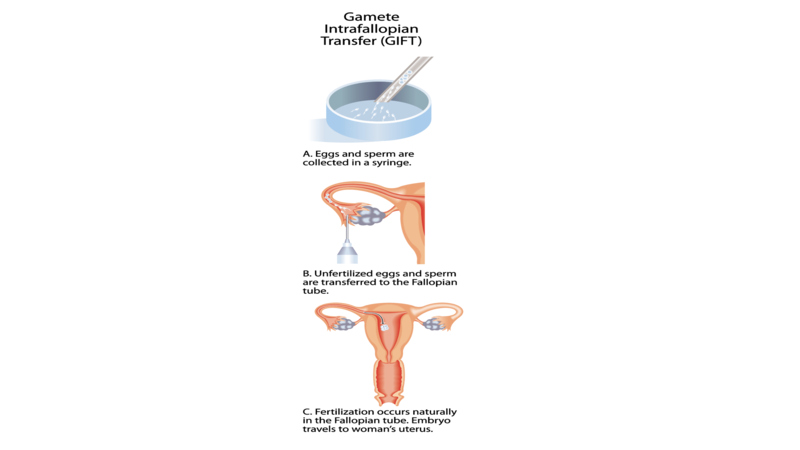
GIFT is the procedure of laparoscopically injecting the oocyte and sperm into the fallopian tube instead of the uterus (10). The procedures GIFT and ZIFT were quite popular in patients with normal tubal patency before the introduction of conventional IVF since they were giving high success rates (11).
After the introduction of IVF, these procedures are rarely in use.
The adverse effects of these procedures include ectopic pregnancy which can be life-threatening.
Here, the stimulation of the ovaries and the ovum pick-up is similar to that of IVF. The ovum and sperm are then injected into the fallopian tube at 4 cm proximal to the fimbrial end of the tube (12).
4. Zygote Intrafallopian Transfer (ZIFT)
ZIFT or Zygote Intra Fallopian Transfer is a procedure similar to that of GIFT. In the process of ZIFT, an Embryo or zygote is fertilized inside the incubator through the process of IVF and then transferred laparoscopically into the fallopian tube (13). ZIFT is another rarely in-use artificial reproductive technology.
5. Donor Egg or Sperm
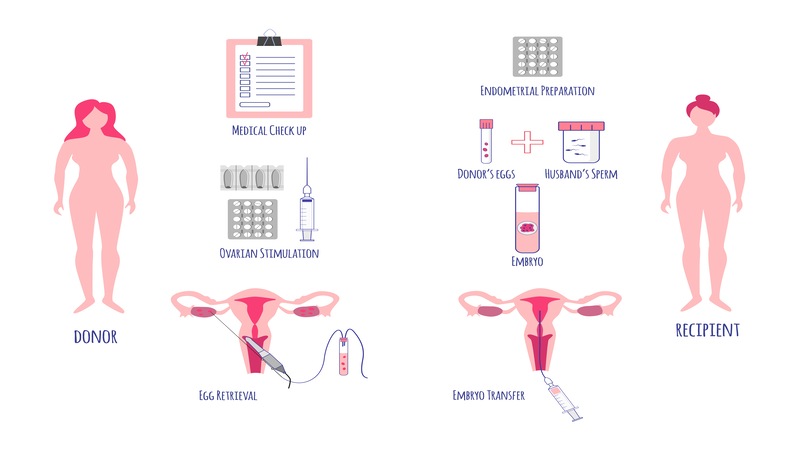
Donor egg or donor sperm techniques are used in couples where the eggs or sperm are defective and cannot be useful for natural conception or any of the artificial insemination methods (14).
These methods are used in cases such as
- Elderly couple
- Premature ovarian failure
- Azoospermia with high FSH levels
- Hypogonadotropic hypogonadism
- History of previous genetic abnormal baby
- Trisomy in a previous pregnancy
- History of genetic abnormality of male or female or both
The couple should carefully weigh the pros and cons before opting for this ART method. The baby’s genetic structure will be different from either the mother or father, and social norms might play a role in the psychology of the parents.
In most cases, the donor will be selected according to couple’s height, features, race, etc.
6. Surrogacy

In local terms, surrogacy is termed as “ womb hiring”. Some women may not be able to conceive due to conditions such as uterine anomalies, Ashermans syndrome, carcinoma, or recurrent implantation failure. Such women/couples can opt for surrogacy. The couple’s egg and sperm will be collected, artificially incubated and placed in the surrogate’s womb to allow for pregnancy.
This procedure may carry legal complications and prove expensive to the couples. The surrogate will need to stay in a hospital or the couple’s house for nine months to take care of the surrogate. The couple will be responsible for the surrogate’s care, medical bills and other responsibilities (15).
7. Preimplantation Genetic Diagnosis (PGD) and Screening (PGS)
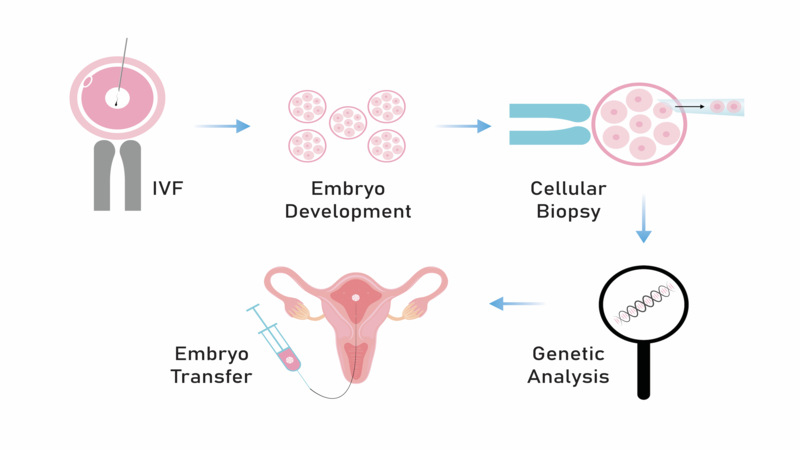
These methods were introduced to the world in the 1990s (16). You can opt for PGD and PGS before IVF or any other fertility treatments. Couples with the following conditions can opt for PGD and PGS (17).
- Previous history of pregnancy anomolies
- Previous trisomy pregnancy
- Couples who wish to have genetic testing and screening done
- Elderly couple
- Any one of the couple has genetic abnormalities
PGD or PGS involves the following steps.
- The fertilized embryo is allowed to grow till day 5 or the blastocyst stage in an incubator.
- From that day-5 embryo, the technician will take out one or two cells through trophectoderm biopsy and send it for testing for specific genetic diseases or screening.
- The results will take around 15 to 20 days,
- The normal embroys will be used for inseminating the woman.
- An expert needs to handle this process with precision to ensure that the embryos remain intact at all stages of the process.
- Good quality and healthy embryos have a high success rate for a viable pregnancy.
8. Fertility Preservation
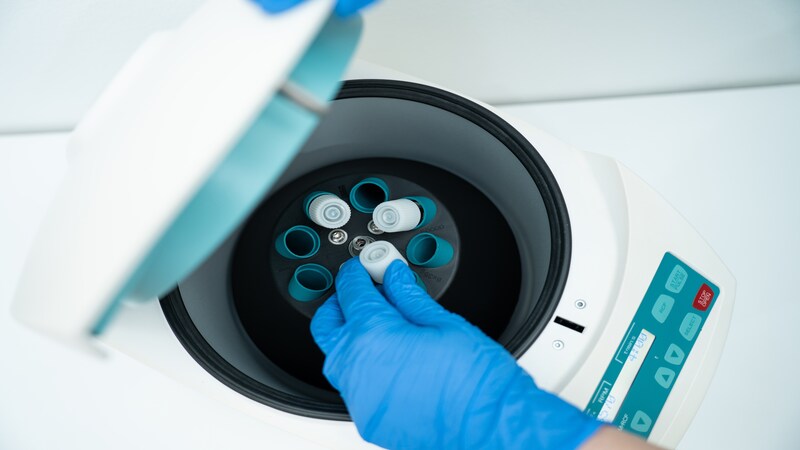
Fertility preservation refers to the preservation of either oocytes or sperms for future use. This is not a regular or routine procedure. Couples who want to preserve their future fertility for various reasons such as cancer/chemo/radiation therapy often opt for this procedure (18). You can opt for freezing sperm for the future, freezing eggs or even freezing embryos.
Other reasons include underlying health conditions that can prove to be a threat to future fertility or postponing the decision to have a child due to career or lifestyle factors.
Men can opt for cryopreservation of their sperm samples while women can opt for egg freezing. The option for freezing embryos is also available to couples who are undergoing stimulation cycles.
Embryo preservation has better results in future pregnancy than oocyte preservation.
9. Emerging Technologies in ART
Emerging technologies can also help improve treatment success rates and have the potential to revolutionize the way we look at ART now. Automation, virtual reality, artificial intelligence and 3D printing have the potential to improve and change the ways we look at fertility treatments and improve the quality of treatments and success results(19).
How to Decide The Right IVF Treatment For You?
An infertility specialist or an expert will be the right person to guide you on the right treatment. If you have tried for at least a year without breaks and have not been able to conceive, it may be the right time to see a fertility expert.
They will do a complete evaluation of both the female and the male and run a bunch of tests. The results may help identify the first set of factors responsible for infertility. From there, they may try treatment options and protocols which may need to be adjusted and changed based on the response of the couples.
Couples should give each other time and discuss when they want to conceive. Advancing age may hamper egg quality and egg reserve for women, while for men the sperm quality may go down. For this reason, it is always a good idea to start planning early. In case of delay in trying or delay in conception, couples should know when to stop trying naturally and start seeking help from an infertility specialist
FAQ’s
1. How do I Choose The Right ART Method For Me?
The ART methods are designed on individual basis, since the genetic makeup, hormonal levels, medicine-taking capacity, and pain tolerance vary from person to person. Your infertility specialist will be the correct person to advise you on the right ART procedure after thoroughly checking both the partners.
2. What Are The Risks Associated With ART?
Per se ART procedures are safe but they can lead to multiple pregnancies, premature delivery, gestational hypertension, cesarean section, gestational diabetes mellitus and the complications related to these.
3. Can ART Guarantee a Successful Pregnancy?
ART, though effective in most cases, may not guarantee 100% pregnancy chance in all cases. Pregnancy is a combination of various factors. A 100% healthy embryo may not always guarantee successful implantation and pregnancy. The success rate of ART procedures is between 40 and 70% and depends on a bunch of factors that may vary from one person to another.
4. What Are The Costs Associated With Different ART Methods?
The cost of any ART procedure can vary from center to center, city to city, state to state, even country to country and lastly protocol to protocol. IVF and ICSI might cost upto 2 lac rupees, PGD and PGS might cost 50 to 70 thousand per embryo.
References
- Huang, J.Y.J., Rosenwaks, Z. (2014). Assisted Reproductive Techniques. In: Rosenwaks, Z., Wassarman, P. (eds) Human Fertility. Methods in Molecular Biology, vol 1154. Humana Press, New York, NY – .https://link.springer.com/protocol/10.1007/978-1-4939-0659-8_8
- Dow K. Looking into the Test Tube: The Birth of IVF on British Television. Med Hist. 2019 Apr;63(2):189-208. – https://www.ncbi.nlm.nih.gov/pmc/articles/PMC6434648/
- Jain M, Singh M. Assisted Reproductive Technology (ART) Techniques. [Updated 2023 Jun 7]. In: StatPearls [Internet]. Treasure Island (FL): StatPearls Publishing; 2024 Jan – https://www.ncbi.nlm.nih.gov/books/NBK576409/
- Jain M, Singh M. Assisted Reproductive Technology (ART) Techniques. [Updated 2023 Jun 7]. In: StatPearls [Internet]. Treasure Island (FL): StatPearls Publishing; 2024 Jan – https://www.ncbi.nlm.nih.gov/books/NBK576409/
- Choe J, Shanks AL. In Vitro Fertilization. [Updated 2023 Sep 4]. In: StatPearls [Internet]. Treasure Island (FL): StatPearls Publishing; 2024 Jan – https://www.ncbi.nlm.nih.gov/books/NBK562266/
- L.L. van Loendersloot, M. van Wely, J. Limpens, P.M.M. Bossuyt, S. Repping, F. van der Veen, Predictive factors in in vitro fertilization (IVF): a systematic review and meta-analysis, Human Reproduction Update, Volume 16, Issue 6, November-December 2010, Pages 577–589 – https://academic.oup.com/humupd/article/16/6/577/740269
- Merchant R, Gandhi G, Allahbadia GN. In vitro fertilization/intracytoplasmic sperm injection for male infertility. Indian J Urol. 2011 Jan;27(1):121-32. – https://www.ncbi.nlm.nih.gov/pmc/articles/PMC3114573/
- ICSI Key Findings, Assisted Reproductive Technology (ART), CDC – https://www.cdc.gov/art/key-findings/icsi.html
- Gianpiero D. Palermo , Queenie V. Neri , Takumi Takeuchi , Zev Rosenwaks, ICSI: Where We Have Been and Where We Are Going, The Center for Reproductive Medicine and Infertility, Weill Cornell Medical College, New York, New York – https://www.thieme-connect.com/products/ejournals/abstract/10.1055/s-0029-1202309
- Dror Meirow, Joseph G. Schenker, Appraisal of gamete intrafallopian transfer, European Journal of Obstetrics & Gynecology and Reproductive Biology 58 (1995) 59-65 – https://www.ejog.org/article/0028-2243(94)01940-9/pdf
- Craft I, Brinsden P. Alternatives to IVF: the outcome of 1071 first GIFT procedures. Hum Reprod. 1989 Nov;4(8 Suppl):29-36. – https://pubmed.ncbi.nlm.nih.gov/2613873/
- Bill Yee, Gregory F. Rosen, Richard R. Chacon, Samer Soubra, Sergio C. Stone,
Gamete intrafallopian transfer: the effect of the number of eggs used and the depth of gamete placement on pregnancy initiation*, Fertility and Sterility,Volume 52, Issue 4, 1989, Pages 639-644, ISSN 0015-0282 –
https://www.sciencedirect.com/science/article/pii/S0015028216609780?ref=pdf_download&fr=RR-2&rr=8c06202919fe2e90 - Mausumi Das, Hananel E.G. Holzer, Recurrent implantation failure: gamete and embryo factors, Fertility and Sterility, Volume 97, Issue 5, 2012, Pages 1021-1027, ISSN 0015-0282 –
https://www.sciencedirect.com/science/article/pii/S0015028212002634 - Banerjee K, Singla B. Acceptance of Donor Eggs, Donor Sperms, or Donor Embryos in Indian Infertile Couples. J Hum Reprod Sci. 2018 Apr-Jun;11(2):169-171. – https://www.ncbi.nlm.nih.gov/pmc/articles/PMC6094527/
- Patel, Nayana Hitesh; Jadeja, Yuvraj Digvijaysingh; Bhadarka, Harsha Karsan; Patel, Molina Niket; Patel, Niket Hitesh; Sodagar, Nilofar Rahematkhan1. Insight into Different Aspects of Surrogacy Practices. Journal of Human Reproductive Sciences 11(3):p 212-218, Jul–Sep 2018 https://journals.lww.com/jhrs/fulltext/2018/11030/insight_into_different_aspects_of_surrogacy.2.aspx
- Prof Karen Sermon, Karen.sermon, Prof André Van Steirteghem, Prof Inge Liebaers, Preimplantation genetic diagnosis, The Lancet, Volume 363, Issue 9421, 1633 – 1641 –
https://www.thelancet.com/journals/lancet/article/PIIS0140-6736(04)16209-0/abstract - Won SY, Kim H, Lee WS, Kim JW, Shim SH. Pre-implantation genetic diagnosis and pre-implantation genetic screening: two years experience at a single center. Obstet Gynecol Sci. 2018 Jan;61(1):95-101. – https://www.ncbi.nlm.nih.gov/pmc/articles/PMC5780327/
- Jani R. Jensen, Dean E. Morbeck, Charles C. Coddington, Fertility Preservation, Mayo Clinic Proceedings, Volume 86, Issue 1, 2011, Pages 45-49, ISSN 0025-6196 –
https://www.sciencedirect.com/science/article/abs/pii/S0025619611601183 - Varghese, A.C., Siristatidis, C.S. (2019). Automation, Artificial Intelligence and Innovations in the Future of IVF. In: Nagy, Z., Varghese, A., Agarwal, A. (eds) In Vitro Fertilization. Springer, Cham. – https://link.springer.com/chapter/10.1007/978-3-319-43011-9_71
Read Also : Types of Infertility and Treatment Options

